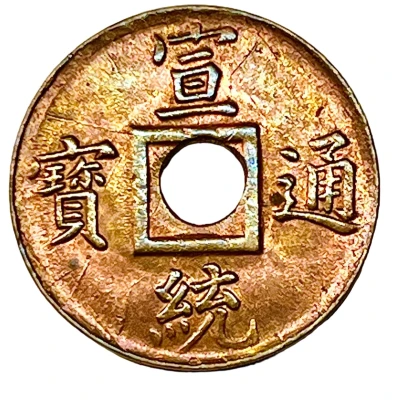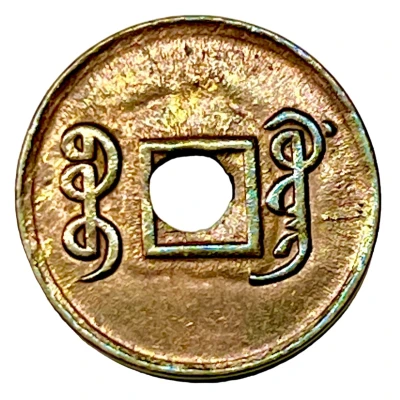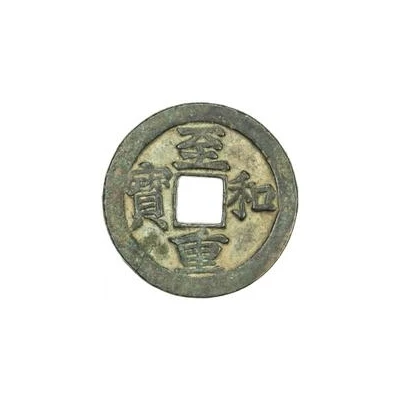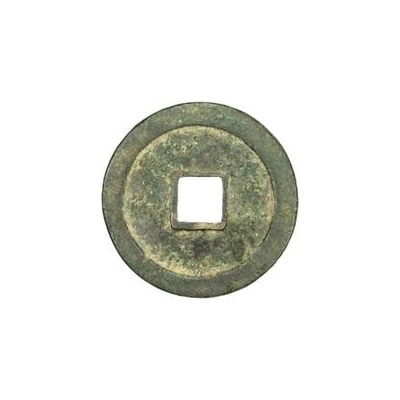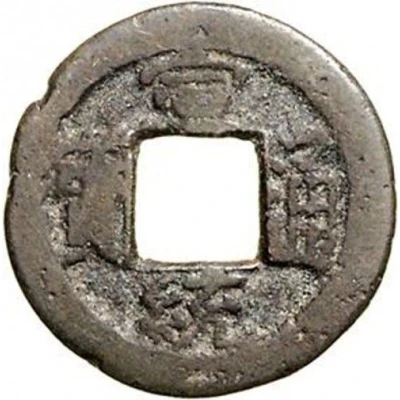
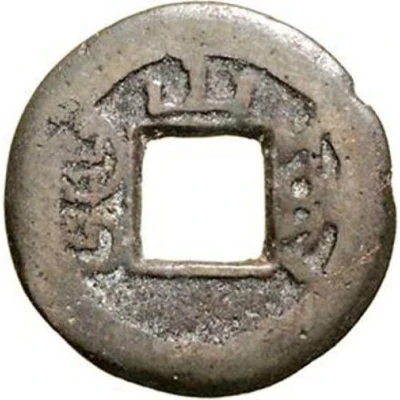

© Teutoburger Münzauktion
1 Cash - Xuantong Tongbao; Boo-yūn; with ideograms ND
| Brass | - | 18 mm |
| Issuer | Empire of China |
|---|---|
| Emperor | Qing dynasty › Xuantong (宣統帝) (1908-1912) |
| Type | Standard circulation coin |
| Years | 1909-1911 |
| Value | 1 Cash |
| Currency | Cash (621-1912) |
| Composition | Brass |
| Diameter | 18 mm |
| Shape | Round with a square hole |
| Technique | Cast |
| Orientation | Medal alignment ↑↑ |
| Demonetized | Yes |
| Updated | 2024-10-04 |
| Numista | N#20632 |
|---|---|
| Rarity index | 71% |
Reverse
Two Manchu words (read vertically) separated by the hole, all with Chinese ideograms above.
Scripts: Chinese (traditional, regular script), Mongolian / Manchu
Lettering:
山
ᠪᠣᠣ ᠶᡡᠨ
Translation: Shan / Boo-yūn
Edge
Plain
Comment
The type with "Kuang" on the reverse likely stands for "Mine", which would indicate a private mine casting these crude coins.Interesting fact
One interesting fact about the Standard circulation coin 1 Cash - Xuantong (Tongbao; Boo-yūn; with ideograms) ND (1909-1911) from Empire of China made of Brass is that it was designed by a French engraver named Charles Moreau. Moreau was a renowned numismatist who also designed coins for other countries, including France, Japan, and Siam. The Xuantong coin was introduced during the reign of the Guangxu Emperor, who was the only emperor of the Qing dynasty to issue coins with his own reign title. The coin features a unique blend of traditional Chinese design elements, such as the dragon and phoenix, with modern European-style engraving techniques, making it a rare and valuable collector's item.
